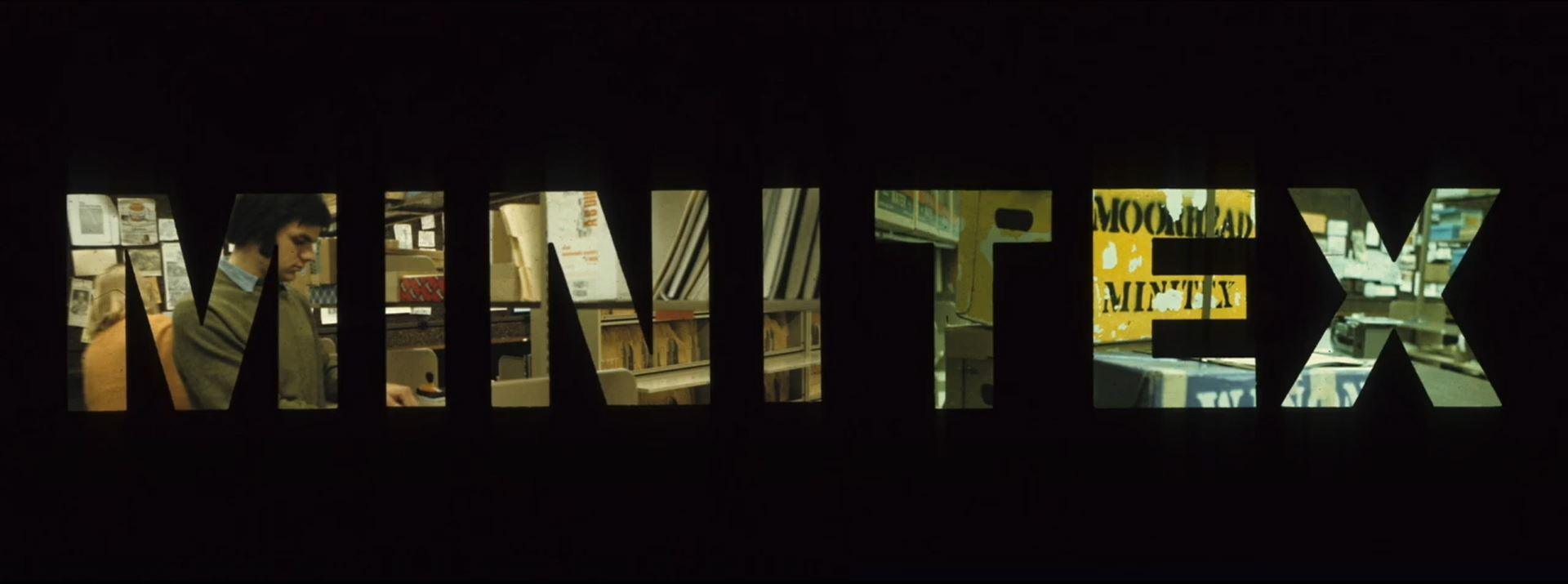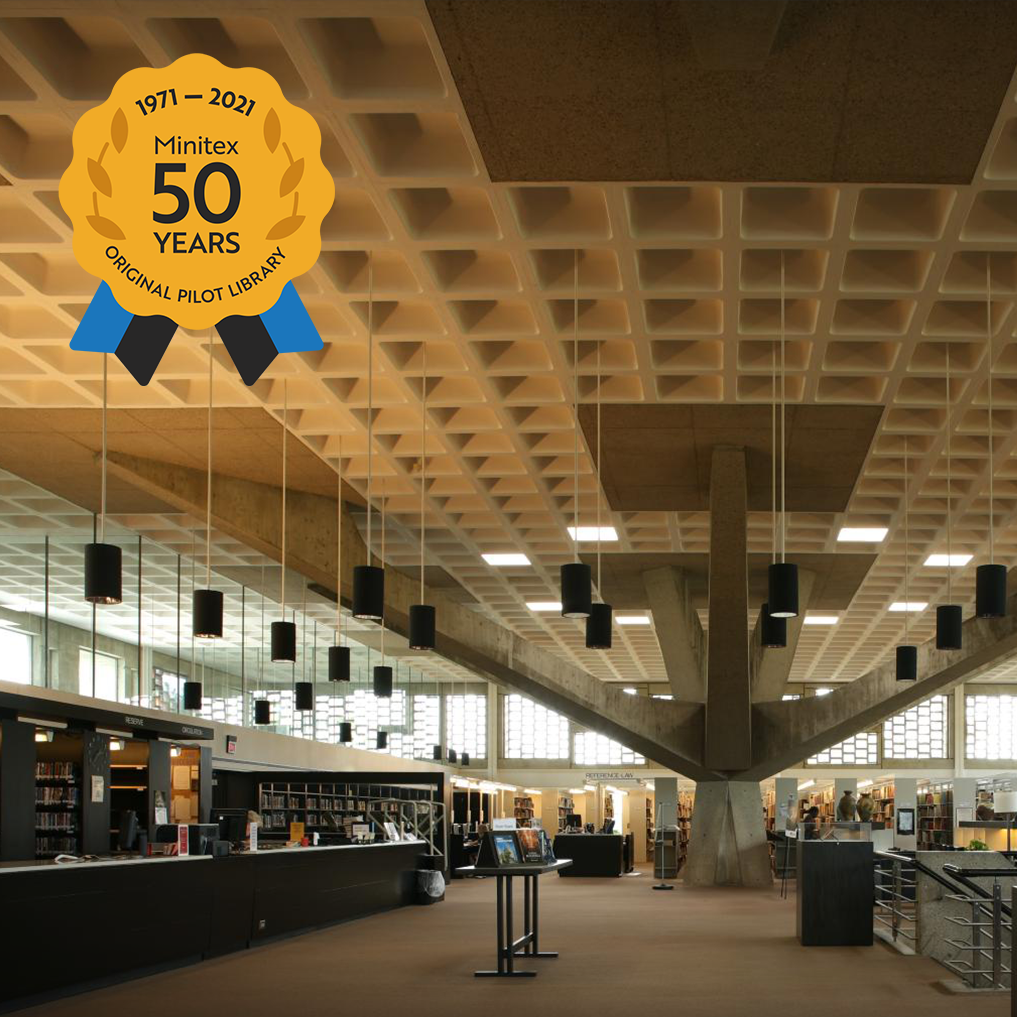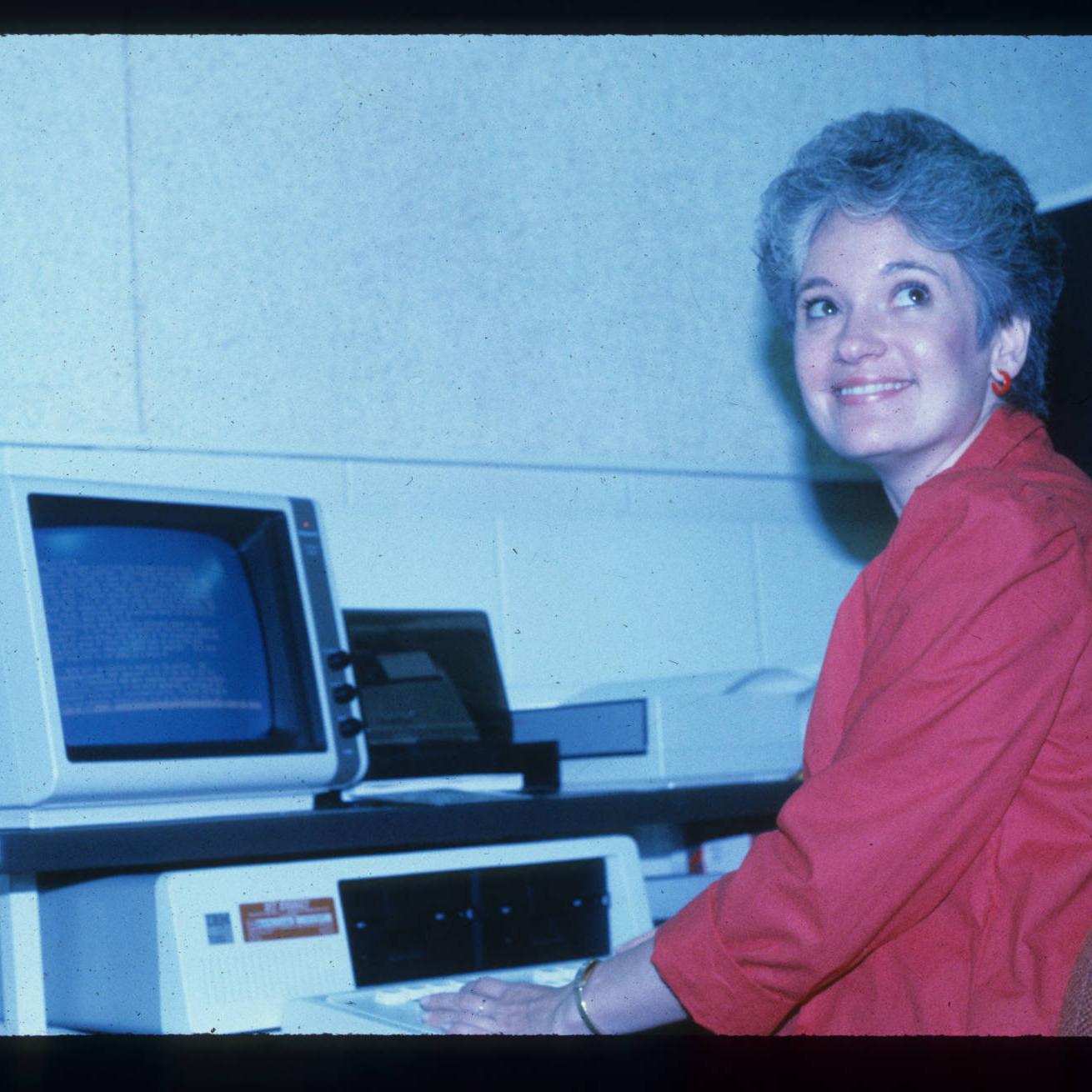by Zach Miller
Quick Summary
To help Minitex celebrate its 50th anniversary, retired staff member Carol Nelson led an effort to reproduce a presentation originally created in 1978 to showcase Minitex services for libraries in the region. Thanks to Carol's efforts (and the efforts of several other active and retired staff members), the presentation is now available online.

To help Minitex celebrate its 50th anniversary, Carol Nelson led an effort to reproduce the presentation originally created in 1978 to showcase Minitex services for libraries in the region. Thanks to Carol's efforts (and the efforts of several other active and retired staff members), the presentation is now available online in a one-minute version that includes the presentation's introductory segment as well as the full presentation, nearly twelve minutes in length.
Tell us about the project to recreate the presentation for digital video?
Carol Nelson: I saw the original slideshow a couple of times. The original had two slide carousels that advanced automatically with the audio track. By the time I saw it, it was no longer being used out in the field, so that would have been in the 1980s. In those days, it would be pulled out as the entertainment portion for a staff lunch. We loved the hairstyles and fashion, and even more loved seeing our co-workers who starred in the slideshow. It was so well done that it held up really well (beyond the fashion of the times, that is). When I think of how much work went into producing that original slideshow - the photography, the script, and just getting the two slide carousels to advance at exactly the right moment - it still amazes me.
Sara Ring, Kathy Drozd, and others on a previous anniversary committee worked on getting the original images and audio digitally preserved, and I'm so glad they did. At some point, the slides (which are deteriorating) were knocked out of the carousels and and out of order. If the presentation wasn't preserved, it could have been lost forever.
How did you reconstruct the presentation?
CN: I used the digitized slides along with the digitized audio cassette of the narrated script in iMovie to create the video. Kathy Drozd, Dave Paulson, and Mark Eckes advised me and we figured out what sections of the photos went with the narration. The three of them had seen the original slide show many more times than I had, and they knew where the sections fit. I had no choice but to take liberties at certain times. There was no way to replicate the original exactly, especially since sometimes there would be two slides showing at the same time. Still, it is pretty close to the original.
Who created the original presentation?
CN: A production company was hired to create the slideshow. At the very end of the full version there is a production company logo. It must have taken quite a while to put it together after the photos were taken. My best guess is that Alice Wilcox had a big role in writing the text for the narration.
How did the presentation work in its original form?
CN: The presentation required quite a lot of equipment to work. There were two slide projectors and an audio tape that all had to be synchronized to move the slides along to the soundtrack. There were a lot of moving parts and sometimes it didn't always work. In fact, here is a little excerpt from the Minitex oral history interview with Mark Eckes about a time when things went very wrong:
"We had a video presentation, it was a slideshow set to music and it was the popcorn song. And we used that hundreds of times. And the one time that I recall is Alice and I trekked over to the Legislature, this big suitcase in tow. [We] set it up and it went totally haywire. The music went on and the slides sped up, so there was no story. The narrative didn’t fit any of the pictures and there was no fixing it. I was just sweating bullets sitting in the back. [Alice would] sort of look over at me with this worried look. I was trying to interrupt it, and pause it, and stop it to get it going in the right time, because I had seen it so many times I could have probably manually clicked it myself, but that wasn’t happening. And so it got done, and there was this pause, and people were sort of looking really quizzically about what the heck was that we were looking at? But Alice just went on, didn’t really mention it as a flaw in her presentation, and we continued to get funding, so I guess it wasn’t that big a deal."
What was the purpose of the presentation?
CN: It was primarily used to promote and educate library staff about still unfamiliar Minitex services in the region at a time when Minitex was relatively new. Alice would have made most of the decisions regarding the content and how the slideshow would be used. It was an efficient way for anyone (who could figure out how to run the slideshow) to travel around the region and get the message out about Minitex programs. Especially in the early days, it was important that the information be accurate, comprehensive, and that we always include information about funding sources.
My best guess is that the presentation was in use for a year or two around 1978. The slideshow incorporates services that were not available at the very inception of Minitex (so those beyond Resource Sharing and Delivery) and includes information about the Minnesota Union List of Serials (MULS), Serials Exchange, Reference, and Training, none of which were in existence during the very first years of Minitex. The MULS, Serials Exchange, and Reference services are no longer in operation. Minitex services have to match the needs of libraries in the region, so programs have changed a lot over the years.
You did a wonderful job with this, Carol. Thank you!
CN: You're welcome! I'm so glad that the project is finished, and I am even happier that this important piece of Minitex history could be preserved.



